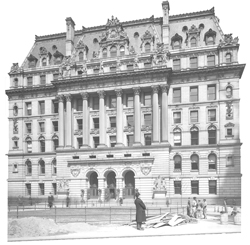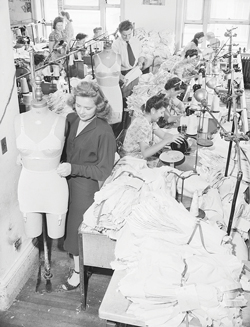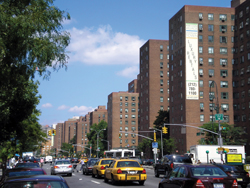Trending
This month in real estate history
This month in real estate history

1910: Oldest NYC land records go missing
Nearly two dozen of the “oldest and most valuable real estate records of old New York” were confirmed missing, the New York Times reported 107 years ago this month. The 23 books of English and Dutch records, which dated as far back as 1686, were lost when they were transferred from an older archives building to the newly constructed Hall of Records at 31 Chambers Street in 1907. They included some of the earliest land transactions following the incorporation of the City of New York, along with marriage licenses, patents, passports and government commissions. The Times noted that “for years” there was no guard at the hall and that anyone could have taken the records. There was concern that landowners would not be able to retrieve original grants for properties or transfer records; however, similar records existed in other archives, such as the New York State Library, and earlier that year, the state had passed a law that allowed the Register of New York County to re-index all records prior to 1891.

Garment District
1944: Garment District owners’ plot to conspire against tenants thwarted
Following a month-long investigation, the Justice Department forced five Garment District landlords to give up their conspiratorial practice of pressuring tenants into long leases, the New York Times reported 73 years ago this month. The landlords admitted to investigators that they met and agreed to demand five-year leases — instead of the usual three — because they worried tenants would leave their properties for the proposed Fashion Center Building, which was located on Seventh Avenue between West 38th and 39th streets. The head of the investigation, special attorney Mervin Pollak, said the landlords had also attempted to buy the Seventh Avenue plot of land as a means of stopping the construction of the new building. They planned on developing a four-story structure on the site, which would be “no threat to the present occupancy of their buildings.”

Stuyvesant Town-Peter Cooper Village
1974: Major landlord group vows tax protest if rents aren’t raised
A major landlord group threatened its members would stop paying taxes if the city didn’t allow for temporary emergency rent increases on rent-controlled apartments, the New York Times reported 43 years ago this month. The Community Housing Improvement Program (CHIP), which represented the owners of more than 2,500 buildings and 350,000 apartments citywide, said landlords needed the rent hike to subsidize the rising cost of heat. Indeed, oil prices had quadrupled because of the Organization of Arab Petroleum Exporting Countries’ embargo on the U.S., according to a Federal Reserve study. CHIP also joined the Associated Builders and Owners of Greater New York in a lawsuit against the Rent Guidelines Board over its decision to limit rent hikes on 275,000 rent-stabilized apartments citywide to between 8.5 and 12 percent. The groups said that amount was far too low to compensate for the increased costs burdening owners.




